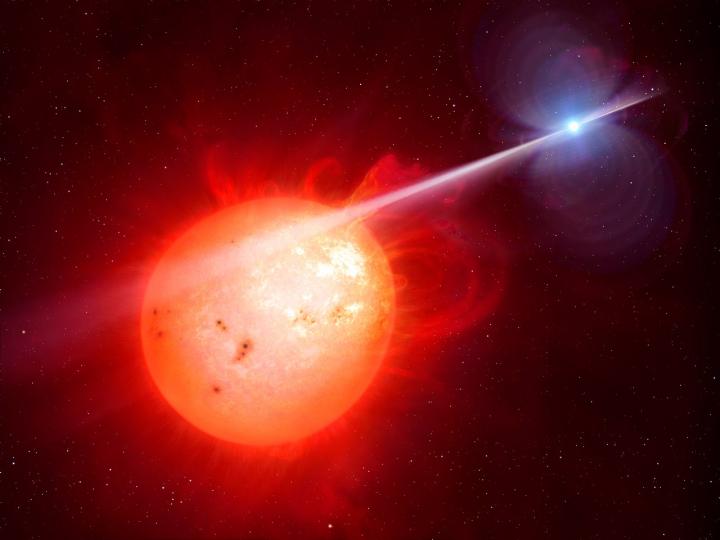New evidence has been uncovered by researchers from the University of Notre Dame that supports an already existing theory as to how these strange stars emit energy. The binary star system the researchers were studying is called AR Scorpii and over the past decade has experienced varying levels of brightness, more than doubling at certain times. AR Scorpii consists of a white dwarf star that interacts mysteriously with its companion star.

Data collected from the Kepler Space Telescope‘s K2 mission was used to try and make sense of these changes in brightness. The researchers then compared this data to that of archival sky survey images going back as far as 2004 to see what changes had taken place in regards to AR Scorpii’s light curve. What they discovered was that this particular light curve was unique in that it exhibits an emission spike every two minutes, in addition to a major variation of brightness over the 3.5 hours orbital period of the two stars.
“One model of this system predicts long-term variations in the way the two stars interact. It was not known what the time scale of these changes might be – whether 20 to 200 years. By looking at the K2 and archival data, we were able to show that in addition to hourly changes in the system, variations are occurring over decades,” confirmed Peter Garnavich, Notre Dame professor and department chair of astrophysics and cosmology physics.
White dwarfs are extremely dense remnants of stars, and just a teaspoon-sized piece of one would weigh more than 10 ton. And, the more compressed they are, the stronger their magnetic field and the faster they spin. In 2016 these systems came into the limelight when researchers discovered that AR Scorpii was, in fact, a rapidly varying binary, where previously they’d thought it to be just a solitary star. “We found that back 12 years ago, AR Scorpii’s peak brightness came a bit later in its orbit than it does now,” confirmed research associate Collin Littlefield. “This does not solve the mystery, but is another piece to the puzzle that is AR Scorpii.”
More News to Read
- Researcher Discovered a New Way of Eco-Friendly Disposal for Data Security and Healthcare
- NASA’s Ocean Observation ReveSea-Leave level Fingerprints
- Chinese Scientists Create Device That Converts Blood Flow Energy into Electricity
- Researchers Revealed a New Clinically Tested Drugs that Inhibits the Growth of Tumours
- What Do You Think About Clothes that Grow With Your Child?

